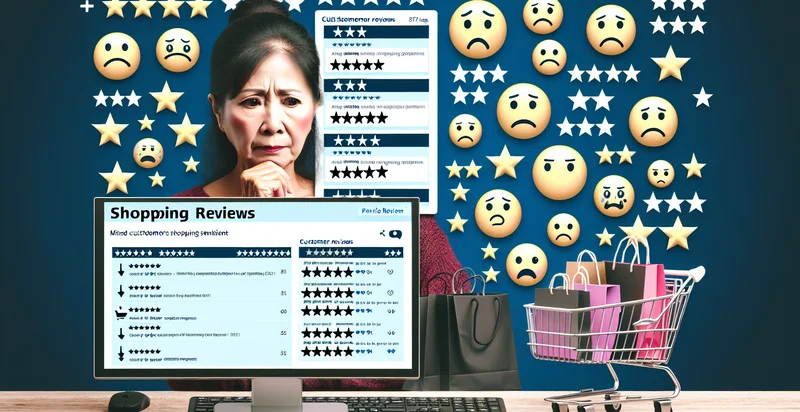Identify purchase feedback sentiment
using AI
Below is a free classifier to identify purchase feedback sentiment. Just input your text, and our AI will predict the sentiment of customer purchase feedback - in just seconds.

Contact us for API access
Or, use Nyckel to build highly-accurate custom classifiers in just minutes. No PhD required.
Get started
import nyckel
credentials = nyckel.Credentials("YOUR_CLIENT_ID", "YOUR_CLIENT_SECRET")
nyckel.invoke("purchase-feedback-sentiment", "your_text_here", credentials)
fetch('https://www.nyckel.com/v1/functions/purchase-feedback-sentiment/invoke', {
method: 'POST',
headers: {
'Authorization': 'Bearer ' + 'YOUR_BEARER_TOKEN',
'Content-Type': 'application/json',
},
body: JSON.stringify(
{"data": "your_text_here"}
)
})
.then(response => response.json())
.then(data => console.log(data));
curl -X POST \
-H "Content-Type: application/json" \
-H "Authorization: Bearer YOUR_BEARER_TOKEN" \
-d '{"data": "your_text_here"}' \
https://www.nyckel.com/v1/functions/purchase-feedback-sentiment/invoke
How this classifier works
To start, input the text that you'd like analyzed. Our AI tool will then predict the sentiment of customer purchase feedback.
This pretrained text model uses a Nyckel-created dataset and has 20 labels, including Appreciative, Content, Displeased, Dissatisfied, Enthusiastic, Frustrated, Happy, Indifferent, Mixed and Negative.
We'll also show a confidence score (the higher the number, the more confident the AI model is around the sentiment of customer purchase feedback).
Whether you're just curious or building purchase feedback sentiment detection into your application, we hope our classifier proves helpful.
Related Classifiers
Need to identify purchase feedback sentiment at scale?
Get API or Zapier access to this classifier for free. It's perfect for:
- Customer Satisfaction Analysis: This use case involves analyzing customer feedback after purchases to gauge overall satisfaction. By applying the sentiment identifier, businesses can categorize feedback as positive, negative, or neutral, allowing them to address issues promptly and enhance the customer experience.
- Product Improvement Insights: Companies can use the sentiment identifier to identify trending feedback themes associated with specific products. By analyzing sentiments, they can pinpoint areas for improvement, prioritize enhancements, and ultimately contribute to product innovation.
- Targeted Marketing Campaigns: By understanding customer sentiment from purchase feedback, marketing teams can tailor their campaigns more effectively. Positive feedback can be leveraged in promotional materials, while negative feedback trends can guide campaigns aimed at re-engaging dissatisfied customers.
- Identifying Brand Advocates: This functionality can help identify customers who express strong positive sentiments about their purchases. Businesses can use this data to nurture these advocates through loyalty programs, referrals, or exclusive offers, facilitating word-of-mouth promotion.
- Monitoring Brand Reputation: Real-time sentiment analysis on purchase feedback allows businesses to track changes in customer perception over time. Prompt response to negative sentiment can prevent potential reputational damage and improve overall brand image.
- Customer Support Optimization: The sentiment analysis can assist customer support teams in prioritizing responses based on the sentiment of incoming feedback. By addressing negative sentiments swiftly, they can improve response times and customer retention rates.
- Competitive Benchmarking: Businesses can analyze purchase feedback sentiment to measure their performance against competitors. By comparing sentiment scores, they can gain insights into their market positioning and strategize accordingly to enhance their competitive edge.


